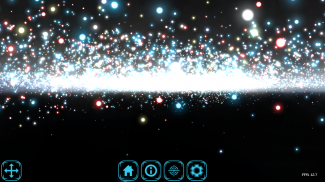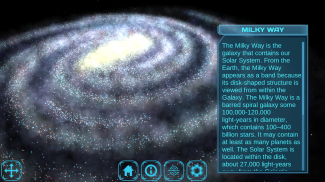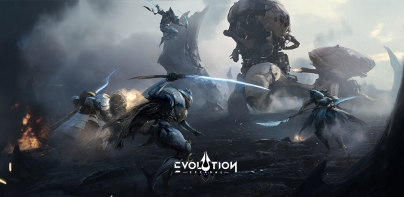










3D Galaxy Map Lite

Opis aplikacije 3D Galaxy Map Lite
★ <b> Features </b> ★
A fully 3D model of the Milky Way Galaxy map - you can <b> rotate, zoom and move </b> the galaxy in any direction.
Information about all the known arms (Far 3kpc, Near 3kpc, Norma-Outer, Orion, Perseus, Sagittarius, Scutum-Crux) and the Galactic Core is displayed when the user touches the respective structure.
★ <b> Options Menu </b> ★
- can modify the star population (reducing results in an increase in FPS performance)
- can show an FPS counter in the bottom right corner of the screen
★ <b> Information </b> ★
This is the mobile version revamp of the galaxy map from <a href="https://www.google.com/url?q=https://www.google.com/url?q%3Dhttp://www.3dgalaxymap.com/Galaxy%26sa%3DD%26usg%3DAFQjCNE3k7JjTzLEEbrgJez9rfHtYvUgew&sa=D&usg=AFQjCNHwSQXlKNT6PXIGZXSUmRgldbymhg" target="_blank">http://www.3dgalaxymap.com/Galaxy</a>
Inspired by the NASA annotated artist's concept from <a href="https://www.google.com/url?q=https://www.google.com/url?q%3Dhttps://solarsystem.nasa.gov/multimedia/display.cfm?IM_ID%253D8083%26sa%3DD%26usg%3DAFQjCNF-609IoPk0jQ5ttzAqY_eH3oQ3lQ&sa=D&usg=AFQjCNGMS-AfC13uqzgfPXqTqhJkZBsOIw" target="_blank">https://solarsystem.nasa.gov/multimedia/display.cfm?IM_ID=8083</a>
Currently contains the first scene - the Galaxy Scene. The following major updates are programmed to be released:
The <b> Sector Scene </b> will have over 140000 stars from multiple astronomical catalogs divided into 10 parsec cube sectors.
The <b> System Scene </b> will grant the user the possibility to explore all the exoplanets discovered so far, and the solar system with its planets and dwarf planets: Mercury, Venus, Earth, Mars, Ceres, Jupiter, Saturn, Neptune and Pluto.
Keywords: galaxy, astronomy, star, map, chart, space, orion, milky way, solar, sun, galactic center, spiral arm





























